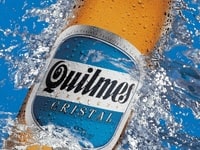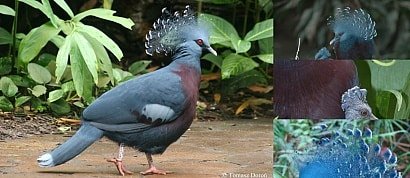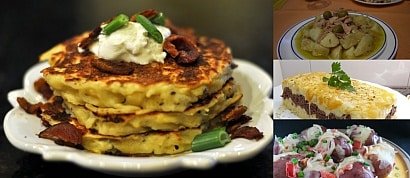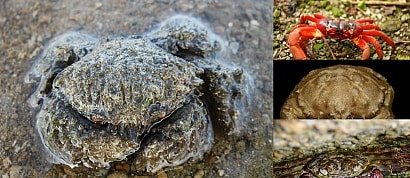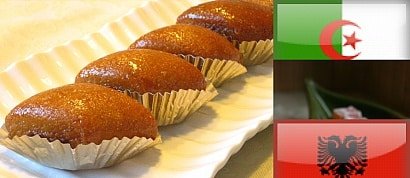Typical Argentine Cuisine
Italian, Spanish and Creole influence on the flavors mingle and delight our palates and those of our visitors.
You are also welcome to visit and share a table with us ... bon appetit!
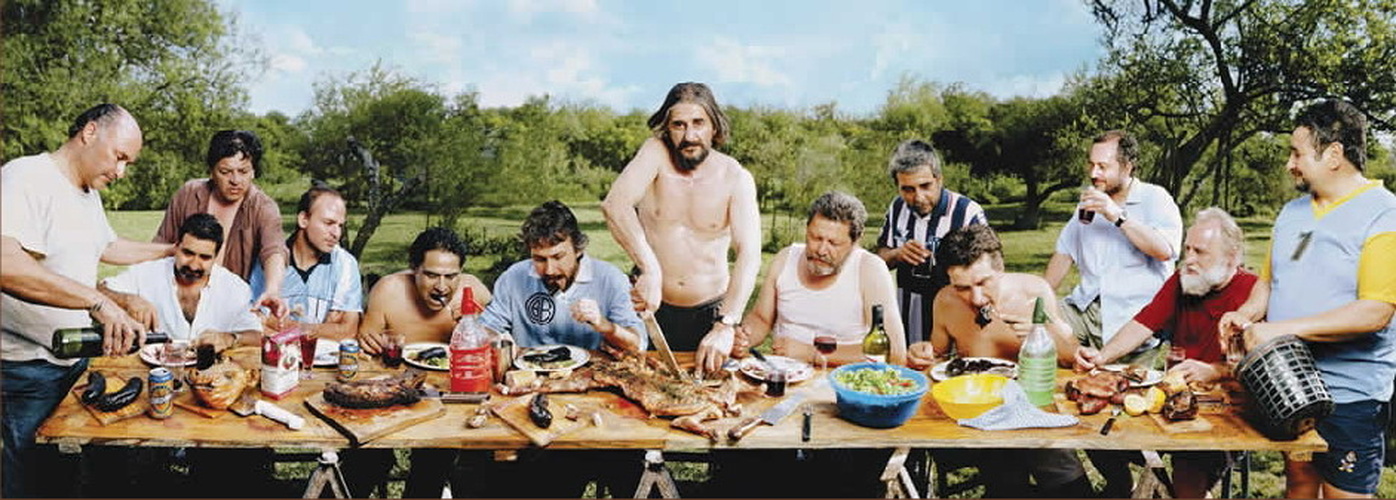
And don't forget to have an Alka-Seltzer near... you will need it! lol
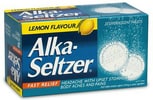
Thanks Sasa for your answer and specially... Thanks Antares! for your help, suggestions, and good vibes!!
Sort by:
Showing 34 items
Rating:
List Type:
 Add items to section
Add items to section
Entrées
It is a typical Argentine beef cut, and cooked in many different ways.
The stuffed rolled matambre is widely consumed as entrée, specially in Holidays.
The stuffed rolled matambre is widely consumed as entrée, specially in Holidays.
It consists of several foods in small quantities served on separate plates or a large platter or wooden board. And served as entrée, usually previously to an asado.
There are also restaurants specializing in picadas, which is served as a main course, and have the most delicious variations.
There are also restaurants specializing in picadas, which is served as a main course, and have the most delicious variations.
 Add items to section
Add items to section
Main Courses

Technically, it is the way of cooking beef over hot coals on a grill or heat of the fire by a cross or pica.
Traditionally, is the national Argentine dish. It is a social event, it is the center of the meetings, and all is celebrated with an asado.
Proudly, we have the best beef in the world! And we know how to cook it... ;)
They can be considered as an entrée, but in fact the Argentine eat them in large quantities and of every possible taste!
The empanadas from Tucumán and Salta are very famous , but each province has its typical one.
Most consumed are made with beef filling, but there are of chicken, vegetables, ham and cheese, humita, etc ...
The empanadas from Tucumán and Salta are very famous , but each province has its typical one.
Most consumed are made with beef filling, but there are of chicken, vegetables, ham and cheese, humita, etc ...
Typical stew from Argentina, Chile and Bolivia.
In a pot on the stove, ingredients like pumpkin, corn or soft corn, and beef (can also be goat or lamb) are added.
In some parts of Argentina, is called carbonada to empanadas's filling.
In a pot on the stove, ingredients like pumpkin, corn or soft corn, and beef (can also be goat or lamb) are added.
In some parts of Argentina, is called carbonada to empanadas's filling.


Although its Spanish name comes from the city of Milan (Italy), the origin of this recipe is unknown. It is typical of Argentina and Uruguayan cuisine. Argentine specialties are Milanesa a Caballo (Riding Milanesa, with fried egg and chips) and Milanesa a la Napolitana (Neapolitan Milanesa, the preparation is like a pizza with tomato sauce, cheese, ham and oregano).
It is a stew made with squash, beans, corn or potatoes. Characteristic of Argentinian Northwest (and several Andean countries), so there are many different recipes for prepare it.
Traditionally Locro is very consumed for our national holidays, on May 25 (May Revolution) and 9 July (Independence Day).
Traditionally Locro is very consumed for our national holidays, on May 25 (May Revolution) and 9 July (Independence Day).
 Add items to section
Add items to section
Salads
Very traditional simple salad to accompany the more delicious Argentine beef.
Main Ingredients: potatoes and boiled eggs.
Main Ingredients: potatoes and boiled eggs.
Known here as Ensalada rusa (Russian salad), this typical European preparation, is very popular in these parts.
Its main ingredients are potatoes, carrots, peas and mayonnaise.
Its main ingredients are potatoes, carrots, peas and mayonnaise.
This is the most popular salad consumed by its simplicity and speed to prepare.
It is known in several countries and each one have his own recipe, in Argentina the main ingredients are: tomato, lettuce and onion.
It is known in several countries and each one have his own recipe, in Argentina the main ingredients are: tomato, lettuce and onion.
 Add items to section
Add items to section
Appetizers
These delicious fried calamari rings are very typical of the Buenos Aires coast, especially in my city Mar del Plata. You can not come to Mar del Plata, and not go to the port to eat a good plate of rabas while sea lions, watching you!
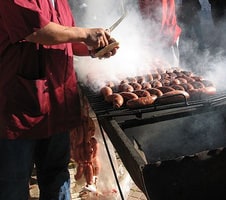
The name is an anachronism between sausage (chorizo) and bread (pan).
Basically it is a sandwich of grilled sausage in a french bread.
Usually tasted pre-asado, in the typical chorizeadas as main course, and also you will find it in the menu of some restaurants.
But undoubtedly the most popular custom is consumed in grills mounted in stalls.
Very typical of Argentina and Uruguayan cuisine.
The crumb sandwich is prepared with a bread crumb, whose bark has been removed and is cut into rectangles.
Served cold, and their ingredients vary from thin slices of various meats and cheeses and vegetables.
The crumb sandwich is prepared with a bread crumb, whose bark has been removed and is cut into rectangles.
Served cold, and their ingredients vary from thin slices of various meats and cheeses and vegetables.
 Add items to section
Add items to section
Desserts & Cakes
Torta Galesa is typical of our Patagonia. Much like Bara brith, was brought to southern Argentina by Welsh immigrants.
Is very usual in teahouses and Holidays.
Is very usual in teahouses and Holidays.
The bread pudding was always left as the last option, as a way to recycle old bread.
But the truth is that it is a delicious dessert, which already integrates the menu of many restaurants.
And even more delicious if served with a dollop of dulce de leche!
But the truth is that it is a delicious dessert, which already integrates the menu of many restaurants.
And even more delicious if served with a dollop of dulce de leche!
This delicious cake is made with only three ingredients: chocolate cookies, cream cheese and dulce de leche.
Born back in the '80s, when two brands came together to make a tv commercial ...
Ideal for sweet-tooth birthdays!
Born back in the '80s, when two brands came together to make a tv commercial ...
Ideal for sweet-tooth birthdays!
As simple as it looks. A thick slice of cheese with an equally thick slice of either quince paste or sweet potato paste.
Is not so fancy, but this combination will melt in your mouth.
Is not so fancy, but this combination will melt in your mouth.
It is a very popular craft cake in Argentina. It consists of a pastry covered with quince or sweet potato and ends with strips of the same pastry, forming a grid.
At home it is usually in round pans and bakeries usually sells them in small rectangular portions.
At home it is usually in round pans and bakeries usually sells them in small rectangular portions.
You shouldn't confused it with the pancake (by the assonance of the words). Basically is a crepe, it's very common in Argentina kitchen.
Here I put in the desserts section, as it is very popular panqueque with dulce de leche and other sweet fillings, but also is used in many savory dishes.
Here I put in the desserts section, as it is very popular panqueque with dulce de leche and other sweet fillings, but also is used in many savory dishes.
 Add items to section
Add items to section
Pastry (sweet & savory)

One of the favorite sweets of Argentine. Two layers of cookie stuffed with dulce de leche (or chocolate, jam, etc).
It can be just presented like that or bathed in black or white chocolate or icing.
The alfajores are a common snacks among kids and there are many brands who make them. And I should proudly say that maybe the more famous are Havanna, wich are from my city, Mar del Plata.
They're good for breakfast, as a snack to accompany one round of mates, some coffee with warm milk,and for not arriving to visit a friend with empty hands.
These sweet masses generically denominated facturas, each having its own name, and come in many varieties.
These sweet masses generically denominated facturas, each having its own name, and come in many varieties.
Are delicious the whole year and every hour, but these pastelitos are traditionally eaten on national holidays (with the locro).
The dough is crispy and flaky and the fillings are typical quince and sweet potatoes.
The dough is crispy and flaky and the fillings are typical quince and sweet potatoes.
A rainy afternoon is synonymous of tortas fritas, in Argentina is very usual. Of course accompanied mate, right?
Basically is a crushed and fried in fat bread, but in every province and in every family recipes vary.
Basically is a crushed and fried in fat bread, but in every province and in every family recipes vary.
 Add items to section
Add items to section
Beverages
If you come to Argentina and do not prove the mate, you will not understand an important part of our culture.
El mate, is the infusion of yerba mate leaves, dried and ground, and is drink in the container of the same name.
If an Argentine invites you with a mate, is offering you his friendship and trust.
El mate, is the infusion of yerba mate leaves, dried and ground, and is drink in the container of the same name.
If an Argentine invites you with a mate, is offering you his friendship and trust.
The Submarino is a hot beverage typical in cold days.
It consists of a cup of hot milk with a chocolate bar dipped in it.
Usually, It is served in a large glass cup inside a metal bracket with handle, so it can be lifted. Since milk is too hot, so melts the chocolate bar.
It consists of a cup of hot milk with a chocolate bar dipped in it.
Usually, It is served in a large glass cup inside a metal bracket with handle, so it can be lifted. Since milk is too hot, so melts the chocolate bar.
Coffee is popular worldwide and Argentina is a big coffee drinker.
Especially in Buenos Aires a new wave of coffee with the arrival of the big chains, local barista coffee and access to first class coffee machines.
Especially in Buenos Aires a new wave of coffee with the arrival of the big chains, local barista coffee and access to first class coffee machines.
Argentina is a major producer of wines and has excellent quality ... the specialty of the house? red Malbec, produced mostly in Mendoza.
 Add items to section
Add items to section
Special Mention
With the asado, and the mate comes the dulce de leche. Nothing more Argentine than this delicacy caramelized milk.
But I have to make a clarification: I've seen on the Internet at non-Spanish speaking sites, that they are quite confused with this sweet.
The Dulce de leche and caramel it's no the same. I observed that it's translated as caramel, and it's not really the same thing. Our dulce de leche it's made by cooking milk and the second is made from sugar.
The Dulce de leche is a NOT a dessert, my friends. Someone could eat it with a spoon, of course, is that rich ... but so is the peanut butter, right?
The Dulce de leche is to spread, to fill, to accompany ... And the more yummy Argentine desserts have dulce de leche!
But I have to make a clarification: I've seen on the Internet at non-Spanish speaking sites, that they are quite confused with this sweet.
The Dulce de leche and caramel it's no the same. I observed that it's translated as caramel, and it's not really the same thing. Our dulce de leche it's made by cooking milk and the second is made from sugar.
The Dulce de leche is a NOT a dessert, my friends. Someone could eat it with a spoon, of course, is that rich ... but so is the peanut butter, right?
The Dulce de leche is to spread, to fill, to accompany ... And the more yummy Argentine desserts have dulce de leche!
Added to
56 votes
Let's Eat, Listal!
(152 lists)list by TrekMedic
Published 8 years, 8 months ago  6 comments
6 comments
 6 comments
6 commentsPeople who voted for this also voted for
Favorite Images of Lizards #1
Favorite Images of Otters #1
Churches in Chiloé Archipelago (Chile)
Marilyn Monroe Is Refreshing Her Feet!
Favorite Images of Pigeons & Doves
Favorite Imposter Films
History's Turning Infinite-BW Pictures With Colour
Favorite Images of Insects
Favorite Images of Fish #1
Butterflies
amazing animals in black and white
Maldives
Around the world with ... a potato.
Crab Species Gallery
Favorite Rabbit Films
More lists from Gaby
The SweeT SiDe of The WoRld (desserts & cakes)
My son movie journal - 2014/2015 ♥♥
Happy/Sad/Confused Series
Movie Posters " In Orange"
Movie Posters "In Red"
Movie Posters "In Purple"
Rainbow Movie Posters + B&W
 Login
Login





































